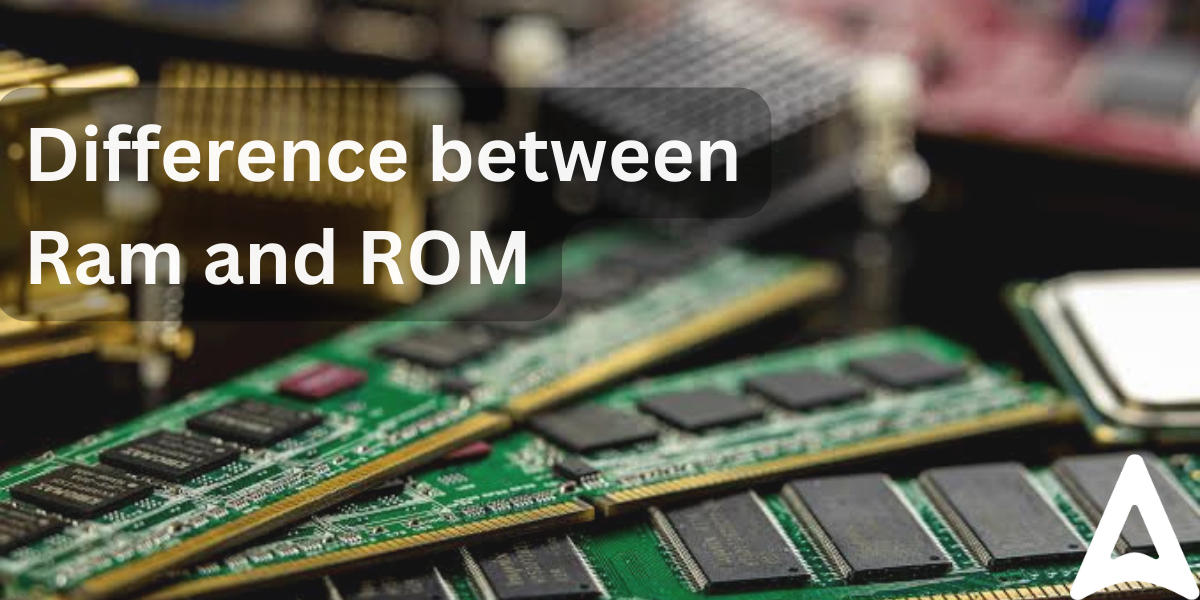Difference Between Ram and Rom: Memory is the most important component to run a computer sufficiently. Memory is a hardware component of computer systems that stores data and information in the computer. RAM and ROM are the computer’s internal memories. However, there are some distinctions between RAM and ROM memory. The primary difference between RAM and ROM is, RAM is the computer’s temporary memory, while ROM is its permanent memory. In this article, we will go to know about RAM and ROM as well as the difference between RAM and ROM.
Difference Between RAM and ROM
Before going into the Difference Between Ram and Rom, It is crucial to understand the definition of RAM and ROM. Memory is the most critical component of a computing system because a computer cannot execute simple operations without it. Memory is in charge of storing data and information on a temporary or permanent basis. Memory can be divided into two categories:
- Primary Memory: Primary Memory is a form of computer memory that the Preprocessor can directly access. It is primarily used to save data on the computer that is currently in use. There are two kinds of primary Memory:
- ROM (Read Only Memory)
- RAM (Random Access Memory)
2. Secondary Memory: Secondary memory is non-volatile, persistent memory that is not immediately accessible by a computer or processor. It is a sort of computer memory that is used to store data and information indefinitely. It enables users to store data and information that can be rapidly retrieved and transmitted. Some of the Secondary Memory are: HardDisk, Compact Disc (CD), Digital Versatile Disk (DVD), Floppy Disk
Difference Between RAM and ROM: What is RAM?
RAM is a short form for Random Access Memory. RAM is volatile memory, which means that when you restart or shut down your computer, the information temporarily held in the module is destroyed. RAM is utilized to store the programs and data that the CPU is now using in real time. RAM is placed on the motherboard in modules known as DIMMs (Dual Inline Memory Modules). The software or data must first be loaded into RAM before it can be launched on a computer. So the program or data is first stored on the hard drive, and then it is loaded into RAM from the hardware. And, once loaded into RAM, the CPU can now read the data or run the program.

Difference Between RAM and ROM: What is ROM?
The full form of ROM is Read Only Memory. Non-volatile memory (ROM) is information that is permanently stored on a chip. The programmable chip is the ROM, which contains all of the instructions required when the system boots. It does not rely on an electric current to save data; instead, binary code is used to write data to individual cells. The ROM is highly useful in automation systems since it may store data according to the needs of the system. The data in ROM can only be read by the CPU and cannot be changed. The CPU cannot immediately access the ROM memory; instead, the data must be transferred to RAM before the CPU can access it.

Differences between RAM and ROM in Computer and Mobiles
One of the most often asked questions in computer science exams is the difference between RAM and ROM. Because both are types of computer memory, random access memory (RAM) and read-only memory (ROM) are often confused. However, there are several significant differences between RAM and ROM. Refer to the table below for the Key Differences Between RAM and ROM.
| Difference between RAM and ROM | ||
| Points of difference | Random Access Memory (RAM) | Read Only Memory (ROM) |
| Storage | RAM is used to temporarily store data. | ROM is used to store data permanently |
| Usage | To ensure that programs execute smoothly RAM enables computers to read data fast. | OM holds all of the apps required to boot the computer for the first time. It just supports reading. |
| Cost | In comparison to ROM, Random Access Memory (RAM) is more expensive. | The cost of ROM is cheaper than RAM. |
| Capacity | Compared to ROM, Random Access Memory (RAM) has a larger capacity. | ROM has a lesser capacity than RAM. |
| Volatility | RAM is volatile memory, therefore its contents are lost when the device is turned off. | it has non-volatile memory means that even when the device is turned off, its contents are kept. |
| Speed | The speed of Random Access Memory (RAM) is faster than that of ROM. | Read-only Memory (ROM) operates at a slower pace than RAM. |
| Accessibility | The RAM can make information accessible with ease. Direct access to the data from the RAM by the CPU. | The CPU cannot read data from the ROM directly. It transfers data from the ROM to RAM so that the CPU may access it. . |
| Read/Write | RAM is a read-write memory, which means that the information contained in RAM can be changed. | ROM is a read-only memory, which means that the data stored on it cannot be altered. |
| Electricity Requirement | RAM requires electricity to flow and sustain information | Electricity is not required to transmit and store data. |
| Function | Used to temporarily store data that is currently being processed by the CPU. | Read-only memory (ROM) storage is used to permanently store data on personal computers (PCs) and other electronic resources. |
Other Related Posts –









 MGSU Result 2025 Out, Download Maharaja ...
MGSU Result 2025 Out, Download Maharaja ...
 EMS Results 2025 OUT at gnanasangama.kar...
EMS Results 2025 OUT at gnanasangama.kar...
 How to Calculate CUET Score, Check Marks...
How to Calculate CUET Score, Check Marks...

